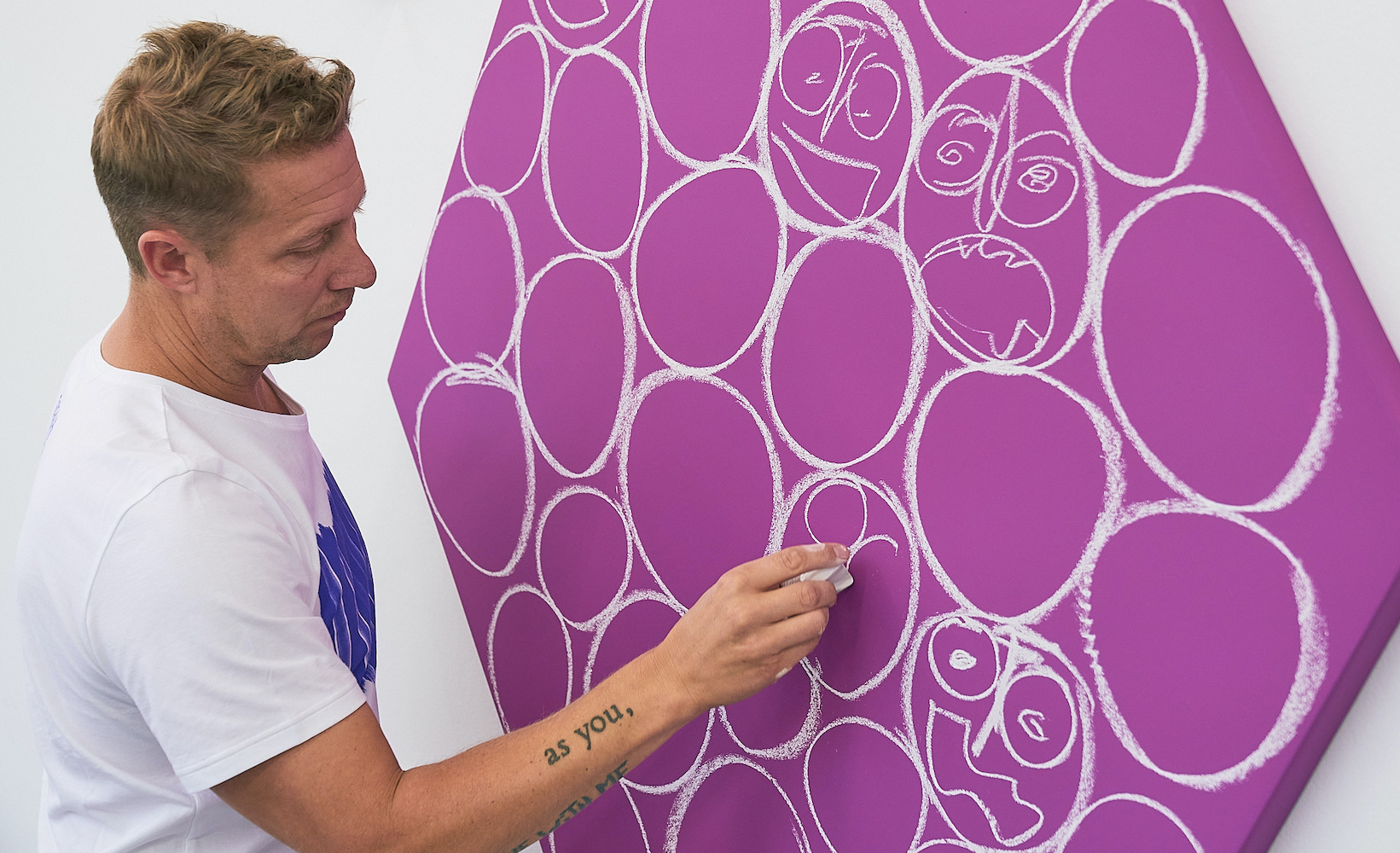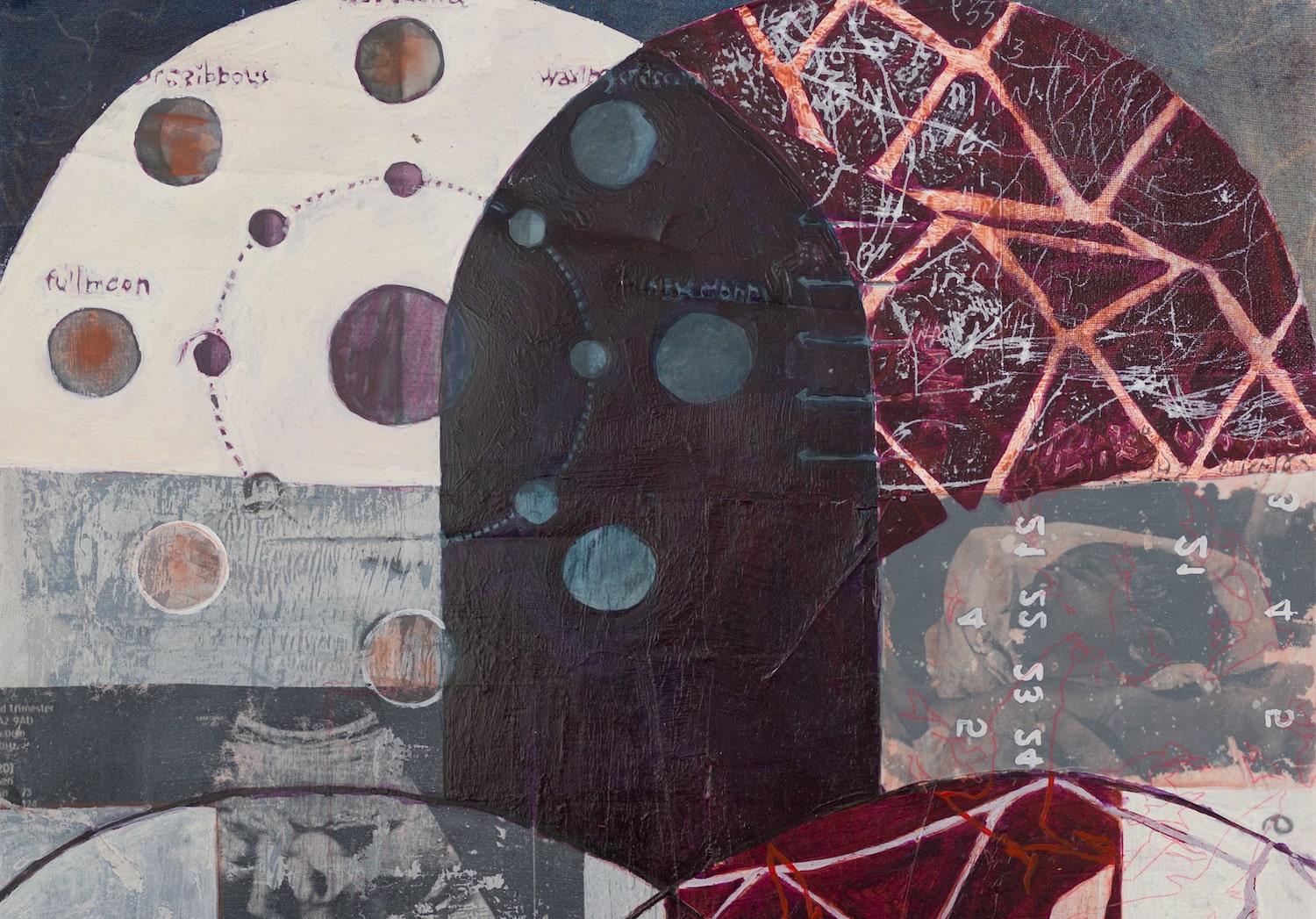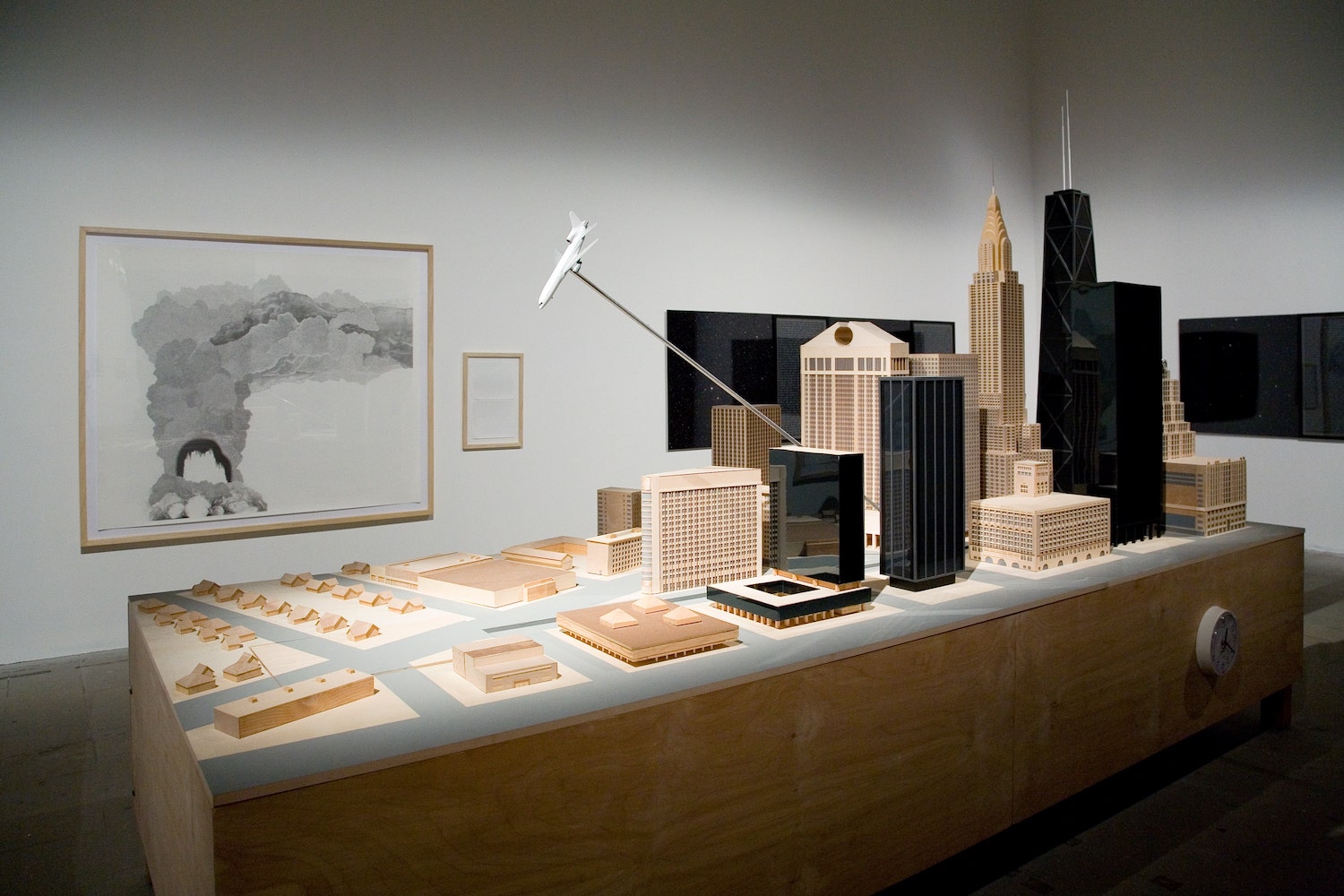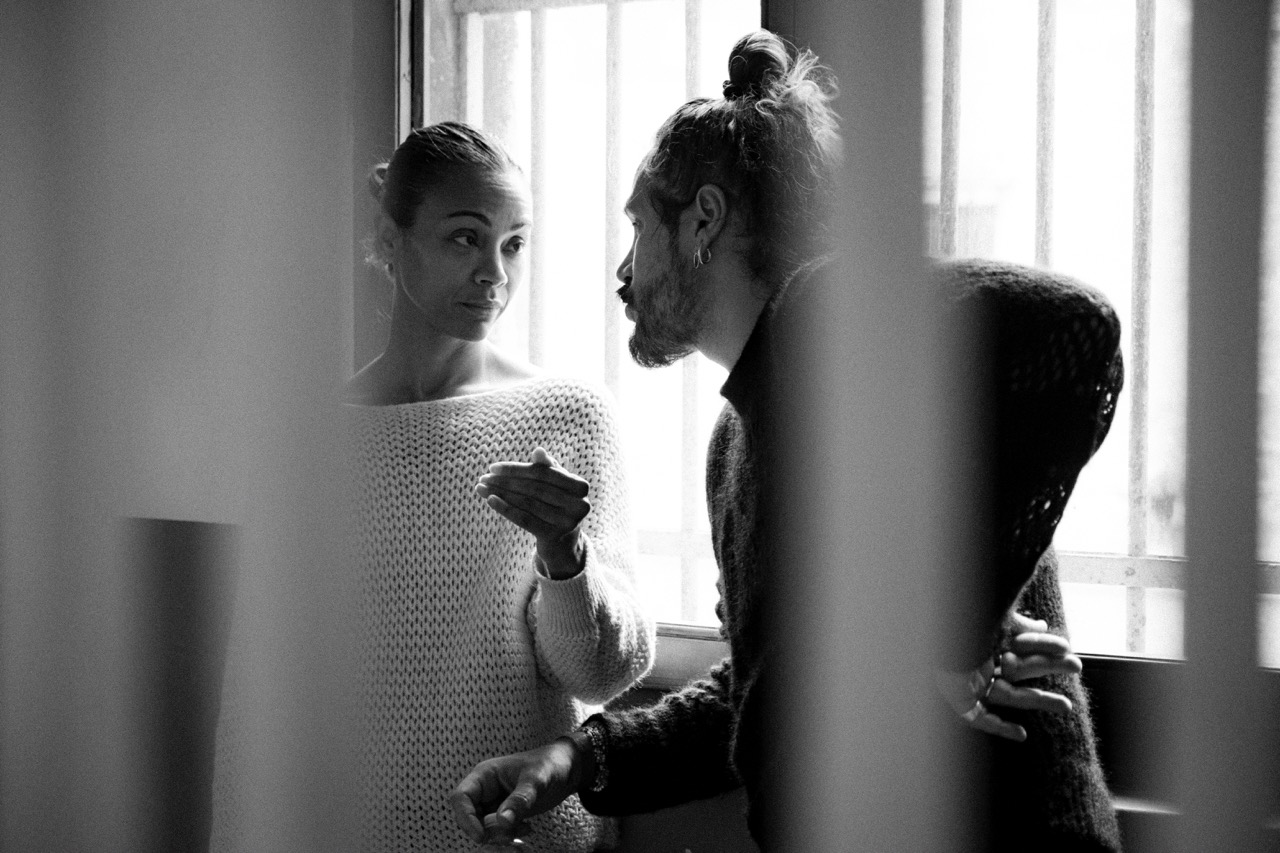Jeppe Hein is known for his perceptually engaging, sculpturally inventive, and conceptually whimsical works, which nod to the 1970s traditions of Conceptual art and Minimalism. Designing artworks that require human participation, the Danish artist challenges the idea of the viewer as a passive figure silently contemplating a work of art.
“RIGHT HERE, RIGHT NOW,” an interactive environment created for the champagne house Ruinart’s annual artist commission, launched at the Palais de Tokyo in Paris this April. It will now travel to major international art events, beginning with this year’s Venice Biennale; Ruinart holds an immersive experience with the artist on April 21 at Palazzo Rocca, where the ever-changing installation will be displayed from April 22–24.
Using humor as a facilitator, Hein sharpens the senses of his audience and their understanding of themselves as he explores the purpose of art itself. Challenging his audience to imagine new possibilities, while drawing their attention to the current moment, he invites us to navigate both metaphysical and physical worlds as we look inside ourselves as well as to the outer world.
Hein’s installation summons the senses through an artful experience that connects the natural elements—earth, water, air, and fire—essential to the making and tasting of Ruinart champagne. Each element is represented by a symbolic equivalent: chalk (earth), a raisin (sun), a fragrance (smell), and an essential oil (water). Viewers are asked to extend their hand into an opening within a mirror, accepting a moment of surprise while seeing their own expression reflected in the glass: unexpected sensations connect us to a pure, elementary memory, like a great champagne linking us to its terroir.
To learn more about the project, we talked to the artist—whose solo show at Moderna Museet in Stockholm opens on May 21, 2022—about his practice, creating engagement between art and audience.
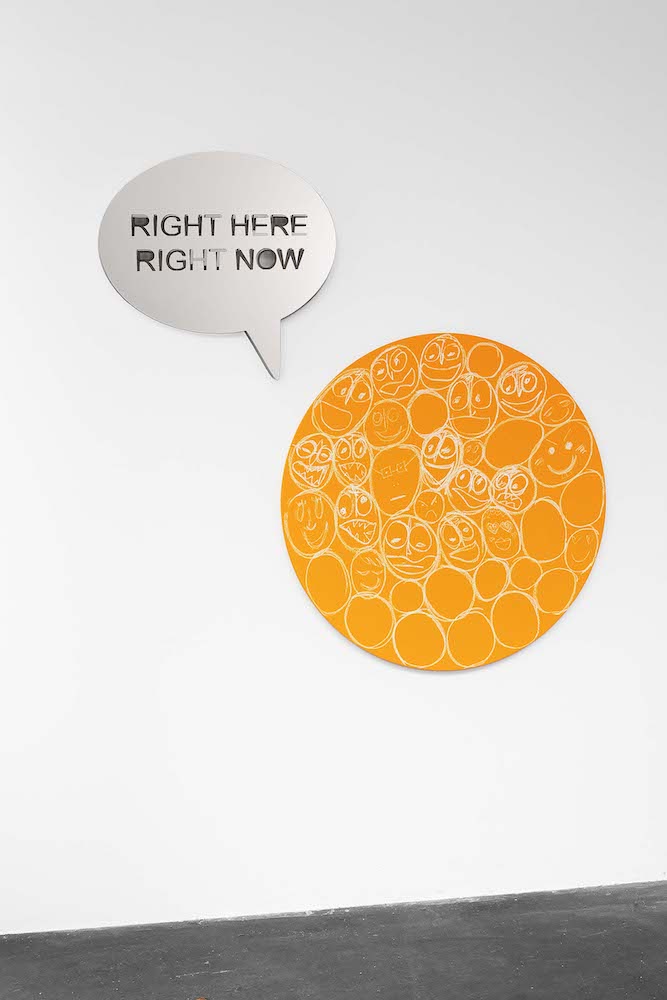
Installation view of Jeppe Hein’s “RIGHT HERE, RIGHT NOW,” photo by Jan Strempel, courtesy of the artist.
WHITEWALL: What was the starting point for this year’s Carte Blanche Project?
JEPPE HEIN: I have been visiting Maison Ruinart several times and realized that the process of making and tasting champagne—from harvesting the grapes to the moment the wine sparkles in the mouth—is a totally sensory experience.
For my Carte Blanche project, I translated this into a participatory art installation to be experienced with all our five senses, and at the same time to connect us to the four elements. In addition, my choice of colors and shapes allude to the seven chakras, energy points in the body that help you to connect with yourself and that are inspirational for me on many levels.
My project is entitled RIGHT HERE, RIGHT NOW, since I believe it is only in the present you can really feel. It is an invitation to embrace the moment; to activate all our senses; to open our hearts and reflect; to join a collective adventure, and at the same time to encounter a unique, individual experience placing us at the center of the creative process.
WW: Your works recurrently revolve around art’s communicative potential—reminding us of the viewer’s vital part in the process with both humor and surprise. How did you displace this outlook onto your project for Maison Ruinart?
JH: My project for Maison Ruinart is not a fixed artwork, but, rather, an evolving creation in which everyone can take part. By putting their hand into an opening of a large mirror, people are invited to accept a moment of surprise and wonder. They will receive one of the four elements, and they are asked to use the five senses: to touch and feel the soft coldness of the chalk; to see the golden structure of the raisin and taste its sweetness; to hear a drop of essential oil falling onto the palm of their hand and smell its fragrance of a Chardonnay flower.
With the chalk people are able to draw their portrait onto colored boards surrounding them, thus sharing their emotions. How they saw themselves in the mirror, how they feel right here, right now. Seven speech bubbles, each with an appellative message, hang next to the boards and might help find their right expression.
The resulting paintings give an insight into very personal thoughts. At the same time, they portray life in its entirety, reflecting the mood in our society and thus encourage exchange about the respective situation. RIGHT HERE, RIGHT NOW invites visitors to reflect on the intangible value of the present moment, which is both fleeting and memorable.
WW: You play a lot with technology, like in your vibrating Shaking Cube (2004) and Mirror Wall (2010), using perceptual tricks as vehicles to raise engagement between art and audience. How do you mean to extrapolate such an experimental outlook onto such a classic house as Maison Ruinart?
JH: Maison Ruinart may be a classic house, but it is also very innovative, and their champagne always offers new experiences. I have been very inspired by their approach and decided to take this up by focusing on a sensory experience and connection to nature, even though I make use of mirrors and the resulting perception in this project, too. Mirrors let us reflect on our own presence by addressing our physical and mental experience of an environment and our position within it. In addition, their shape and color relate to the reflective labels and bottles as well as sparkling bubbles of Ruinart’s champagne.
WW: After a burnout in 2009, you started practicing mindfulness and breath work, incorporating it into your daily life and artistic process, even creating a public project entitled Breathe with Me, which, in light of recent turbulent times, received a lot of positive attention. Tell us how such a mental shift translated itself into your process, what you learned from it as an artist and how it has evolved since you first launched the project in September 2019.
JH: The awareness of my breath enables me to balance out the body and mind in all circumstances of life. A crucial example of this balance can be found in my work entitled Breathing Watercolours. Breath guides the strokes of the watercolor, to create a repetitive pattern of vertical blue stripes painted onto a white paper or wall. Each line represents one breath. The color is intense and vigorous at the beginning of each stroke, but gradually fades towards the bottom. Each line signifies the process of breathing in or breathing out in full awareness.
WW: You often talk about communication and art’s communicative potential in your work. How did it become such a point of focus in your personal practice?
JH: I grew up in Denmark, a small country where education is free and even financially supported, where social relationships in the society are highly valued and so is the motivation to create art. In addition, my parents, who are hippies living on an organic farm, influenced me a lot and made me value the dialogue with people. I guess for this reason I consider art a language that, even though it is not spoken, fosters communication.
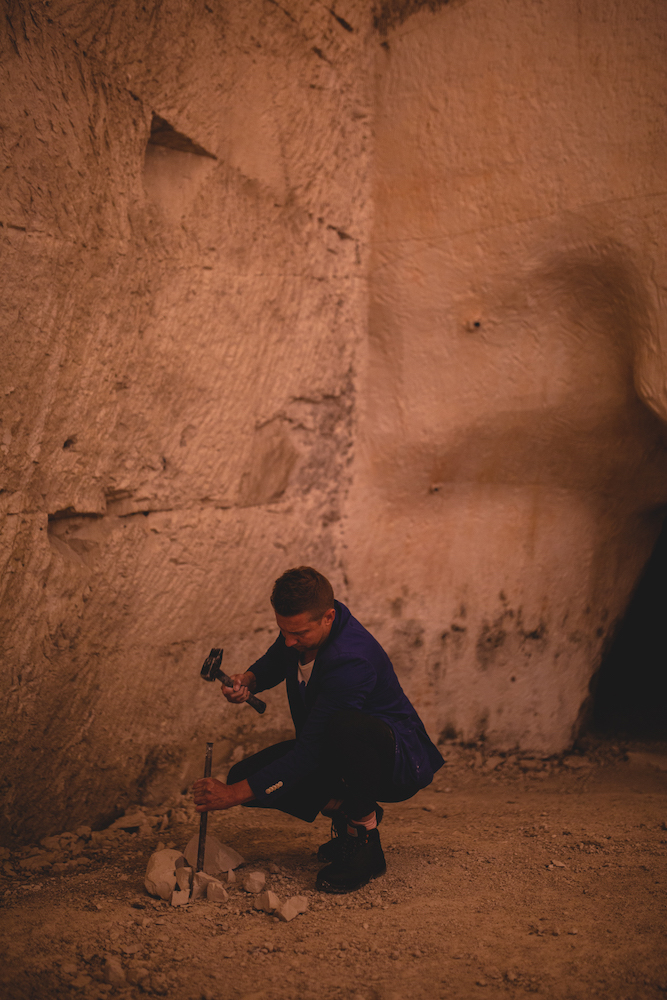
Photo by Mathieu Bonnevie, courtesy of the artist.
WW: You use humor as a means of engaging the viewer, featuring surprising and experimental, trickster-like pieces, which places the spectator firmly at the center, focusing on their experience and perception of the surrounding space. Why do you choose to use humor in this interactive process?
JH: Humor, playfulness, and participation make it easier for people—especially for those who normally are not in touch with art—to approach artworks. Art can be very appealing for people, creating joyful situations as well as relaxing moments and opportunities for interaction with other people.
WW: What is the usual thought process behind these artworks?
JH: I need a free mind and body to be inspired and creative, which I experience either when I am far away from the art world, during meditation, or when I am brainstorming with my team. When a new idea crosses my mind, I usually discuss it with my studio and we start research on materiality and feasibility. Often a model is produced and tested before the final artwork is realized.
WW: Can you describe your studio for us? What is a typical day in the studio like for you?
JH: My studio is built up as a family. Each person is part of a bigger whole. It allows me to be creative and free. Usually, I start with a Smil Kaffe, organic coffee that I distribute with a friend and that puts a smile on your face. I have a first chat at the coffee machine and continue talking to my team while walking around. Then we all meet in the kitchen, which is the heart of the studio, where we have lunch prepared by our chef. We also have a rooftop garden with bees, herbs, and vegetables.
Cooking and food is very important for me, and we always have lunch together, since it is a fantastic way to gather people and simply enjoy being together. That’s why I am also very excited about the collaboration with five international chefs for Ruinart’s Food for Art program, where we inspire each other to create an unforgettable artist dinner as part of my project. In the afternoon I meditate or do yoga; I paint, draw, and sketch new ideas.
WW: Your works share many similarities with the traditions of Minimalist sculpture and Conceptual art from the 1970s. Can you tell us a bit about how the decade inspired you as an artist?
JH: I have been inspired by Dan Graham, Robert Morris, Robert Smithson, Larry Bell, Olafur Eliasson, and Asger Jorn, because they are all working with communication and experience. We always talk about what we see, but in my opinion, it is more important what we feel and experience when we face an artwork. Ideally, my work fosters communication and empathy that people will pass on to others, since this is really important nowadays.
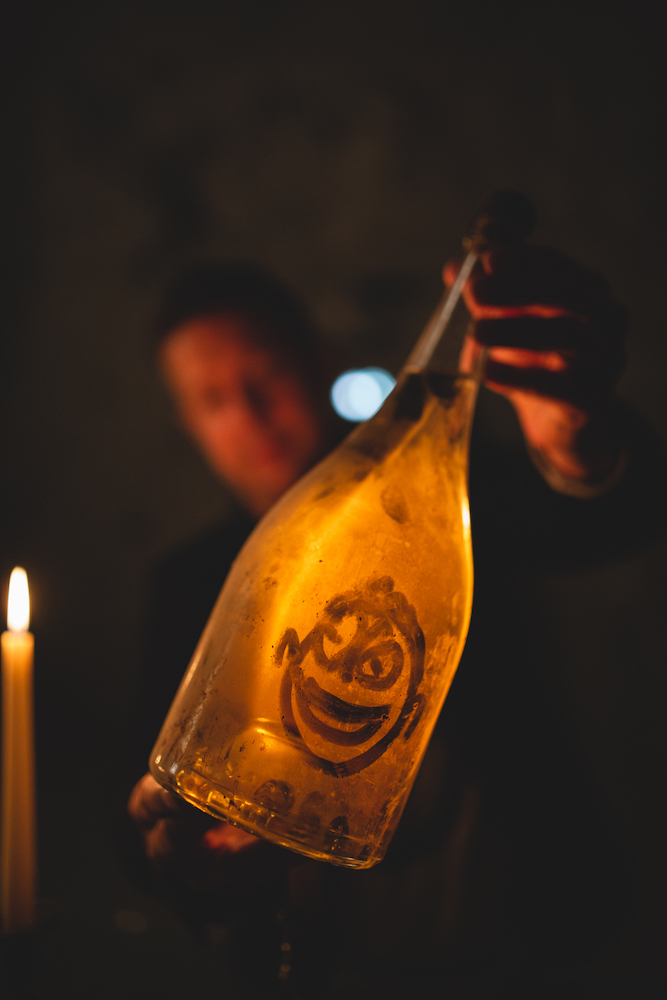
Photo by Mathieu Bonnevie, courtesy of the artist.


